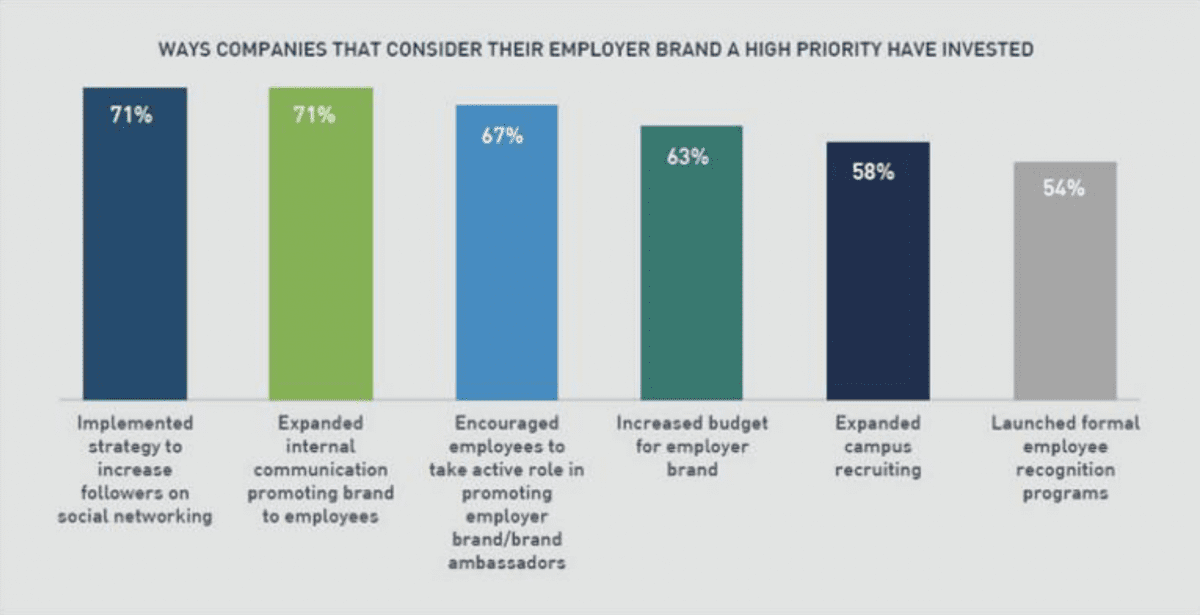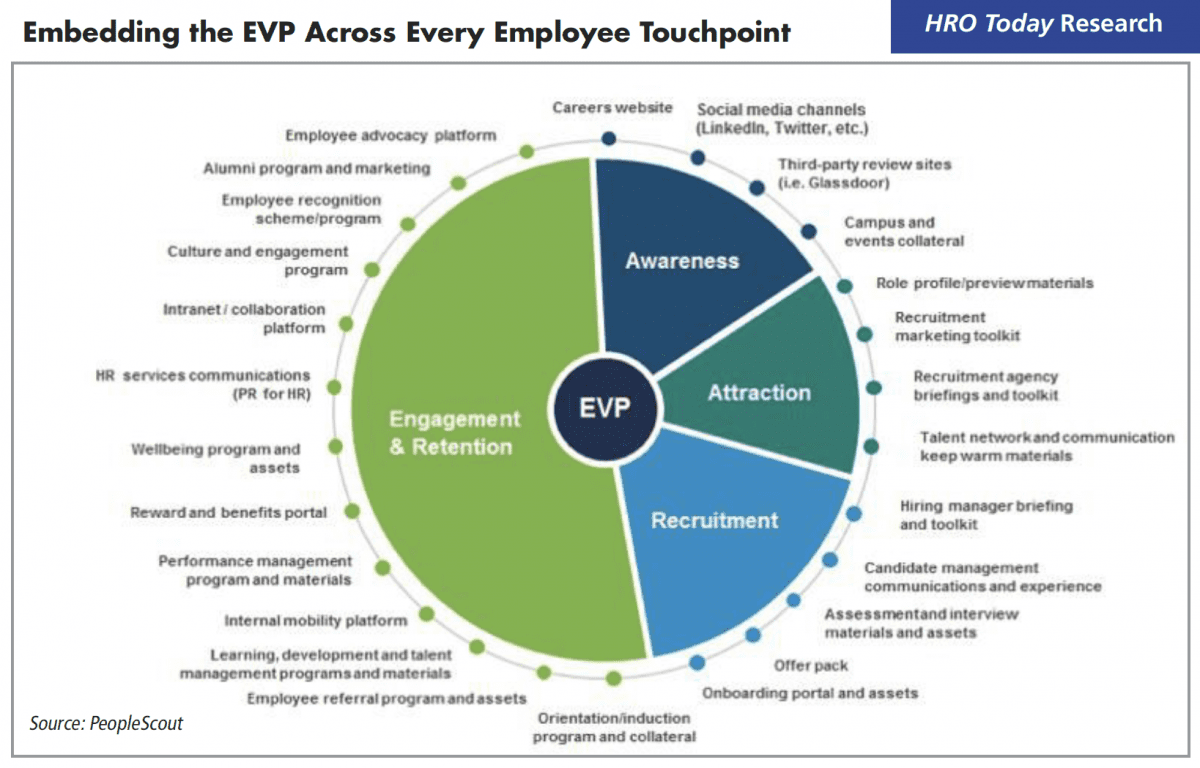New research provides insight into how companies invest and measure the impact of employer branding.
By Larry Basinait
How do organizations measure the impact of their employer branding activities and how are they investing in those brands? New research from HRO Today, in partnership with PeopleScout, found several best practices that help answer those questions by comparing companies that consider their employer brand a high priority to those that attach less significance to it.
According to a recent study by LinkedIn, 72 percent of recruiting leaders worldwide agree that employer brand has a significant impact on hiring. The study also reports that the number one obstacle candidates experience when searching for a job is not having a clear understanding of what it’s really like to work at an organization.
In order to gain more insight into the scope of employer branding, study respondents were asked if they saw their employer brand as a candidate attraction effort only, or as part of a wider engagement initiative. Nearly nine in 10 (85 percent) of respondents stated that it is part of a broad-based initiative. The employer brand extends to all stakeholders in a business, from stockholders or owners to business partners, suppliers, and ultimately, customers and candidates.
While most are looking at traditional talent acquisition areas like website traffic, quality of hire, and social engagement, only 20 percent are using those means to understand employer branding success. Less rigorous analysis of employer brand, compared to the measurement of other areas of talent acquisition, may be from a lack of resources or a lack of understanding of what to measure. Most respondents (87 percent) feel their employer brand does not completely distinguish their organization from other companies that are competing for the same talent. Organizations are struggling to express exactly what makes their employer brand unique, despite knowing the importance of branding.
Is employer brand a priority? Some of the differences between companies that prioritize employer branding and those that do not include:
- Communication. Nearly three-quarters (71 percent) of organizations that value their employer brand invest in a strategy to increase social media followers, and the same amount expand their internal communications strategy to promote their employer brand.
- Brand ambassadors. These organizations are also far more likely to encourage employees to take an active role as brand ambassadors.
- Investment. Not only have organizations increased the employer brand budget amount, they have specific budget dollars allocated for it, though it’s usually a component of the talent attraction budget. Given that the evolving goals of employer branding go beyond talent acquisition, this allocation will likely evolve as well, joining the 22 percent that currently have a separate, stand-alone budget for employer branding.
- Strategy. Virtually all companies that consider their employer brand a priority feel it is essential to the overall TA strategy.
- Metrics. Organizations that prioritize employer brand measure the impact of the activity, including social engagement rates and quality of applicants.
- Accountability. Those with a high-priority employer brand are much more likely to feel that the responsibility for the employer brand is a joint effort between HR, talent acquisition, and marketing.
















